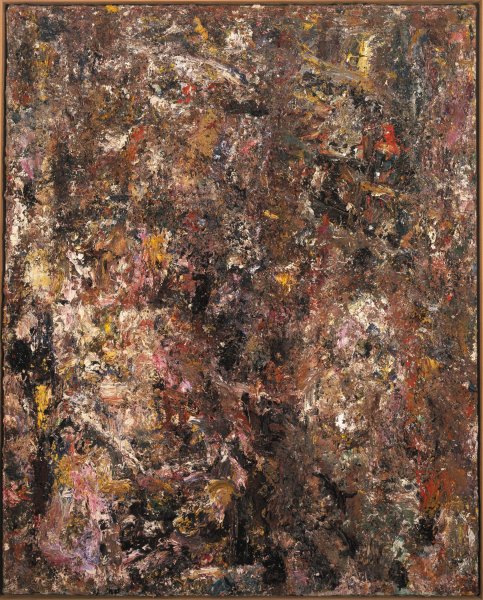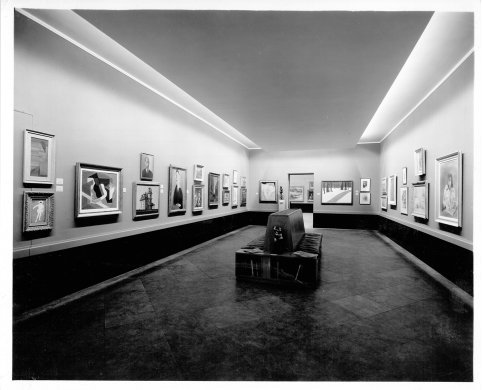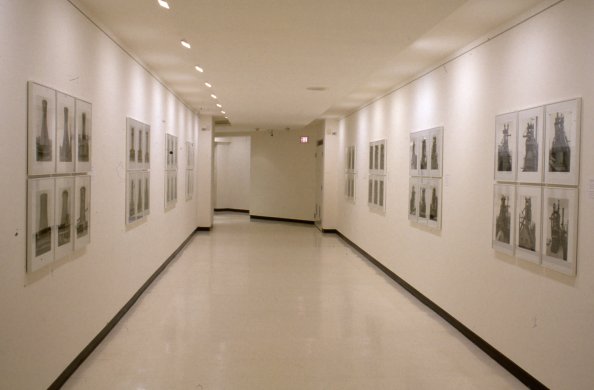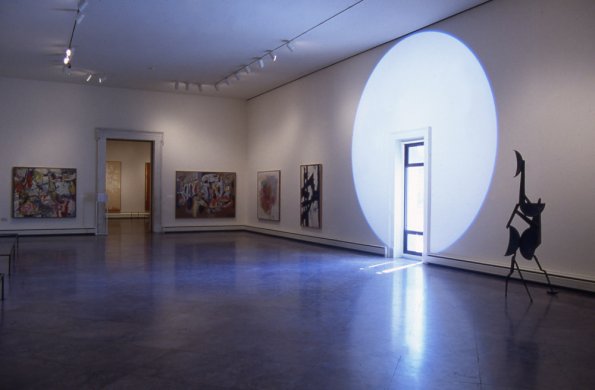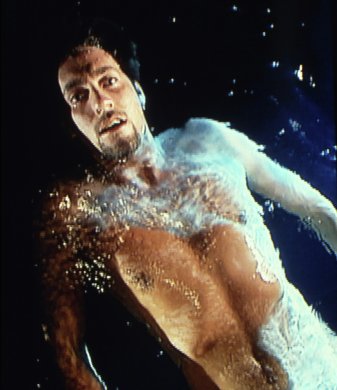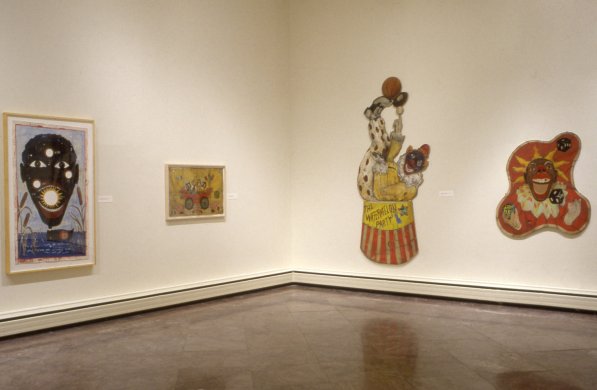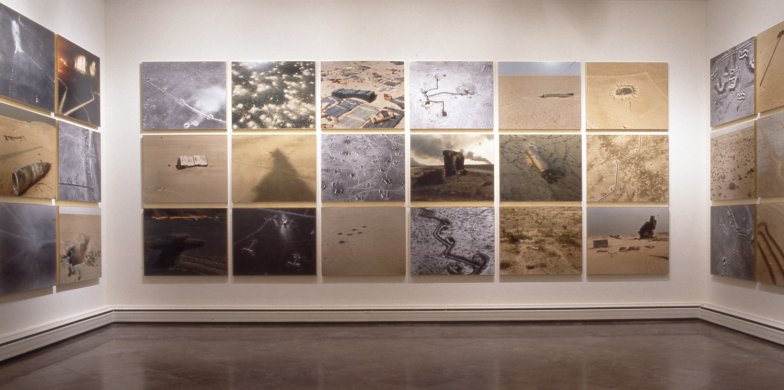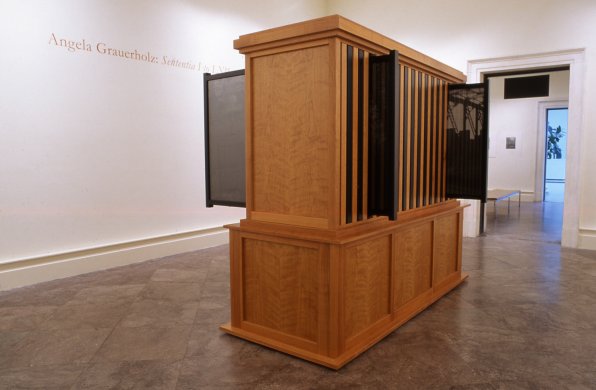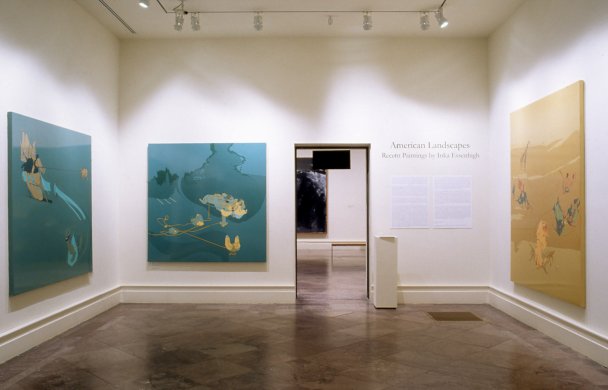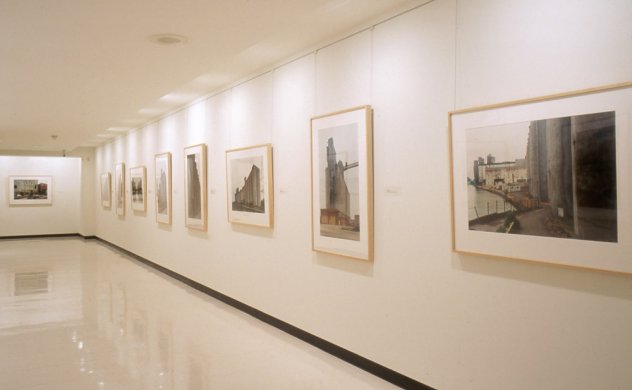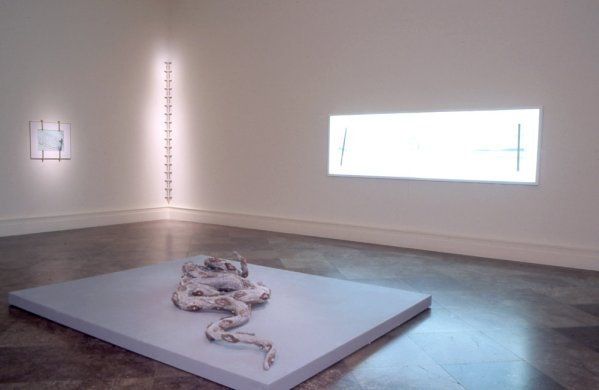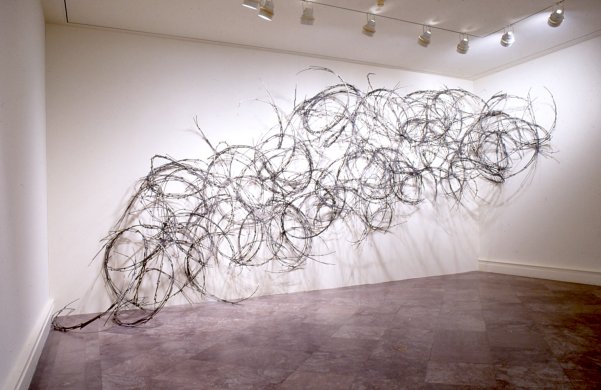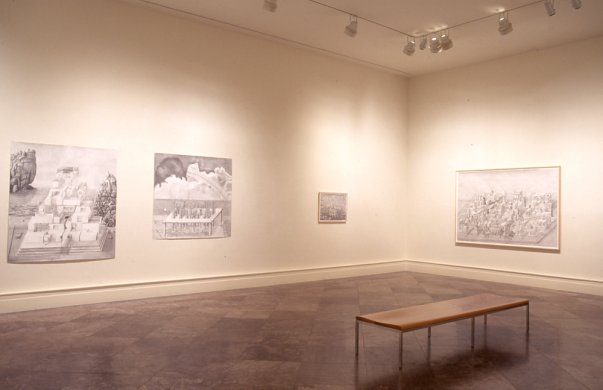New Room of Contemporary Art: Eugène Leroy
Saturday, January 22, 2000–Sunday, March 5, 2000
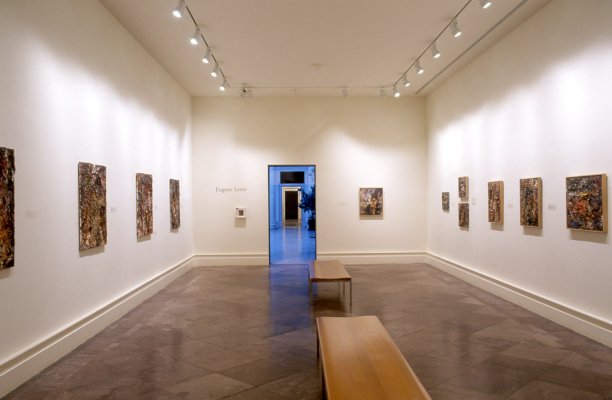
Installation view of New Room of Contemporary Art: Eugène Leroy. Photograph by Tom Loonan.
1905 Building
Eugène Leroy's paintings pile layer upon layer of gnarled paint on canvas. Built up to stretcher-buckling thickness, these paintings slowly reveal all the classical subjects — still lifes, landscapes, interiors, portraits, and the female nude. It is the obsessive slowness of his task that turns these canvases — which he works on for as long as a decade — into existential exercises. The history of art, topography, and contemporary angst appear captured in his sensuous application of pigment.
Dedicating himself to the changing quality of light in his crowded, paint-filled studio, Leroy has turned the "impressionism" popular at the turn of the century and the expressive abstraction of the 1950s into a highly potent meditation on this obsolete craft, uniquely understood during a time of photography and video. This was the first solo museum exhibition in the U.S. of the highly regarded, then 90-year-old, painter from France. A color brochure accompanied the exhibition, written by Assistant Curator Claire Schneider.
This exhibition was organized by Assistant Curator Claire Schneider in conjunction with the New Room of Contemporary Art series.
About the New Room of Contemporary Art
The concept of the New Room of Contemporary Art echoes the mission and philosophy of its predecessor, the Room of Contemporary Art. Established in 1939, the Room was envisioned as a both a physical site devoted solely to the continuously rotating presentation of new art within the museum and a means to reinvigorate and reaffirm the museum’s dedication to collecting the art of its time.
It was managed by a special independent committee initially consisting of Buffalo attorney Philip J. Wickser (who helped to conceive the room and who drafted its charter), Seymour H. Knox, Jr., Albright Art Gallery Director Gordon B. Washburn, and artists Charles E. Burchfield and Anna Glenny Dunbar, both of whom called Buffalo home. Through the Room of Contemporary Art fund, the museum acquired Fernand Léger's La fume (Smoke), 1912; Joan Miró's Carnaval d'Arlequin (Carnival of Harlequin), 1924–25; and Henri Matisse's La Musique (Music), 1939, among many others.
